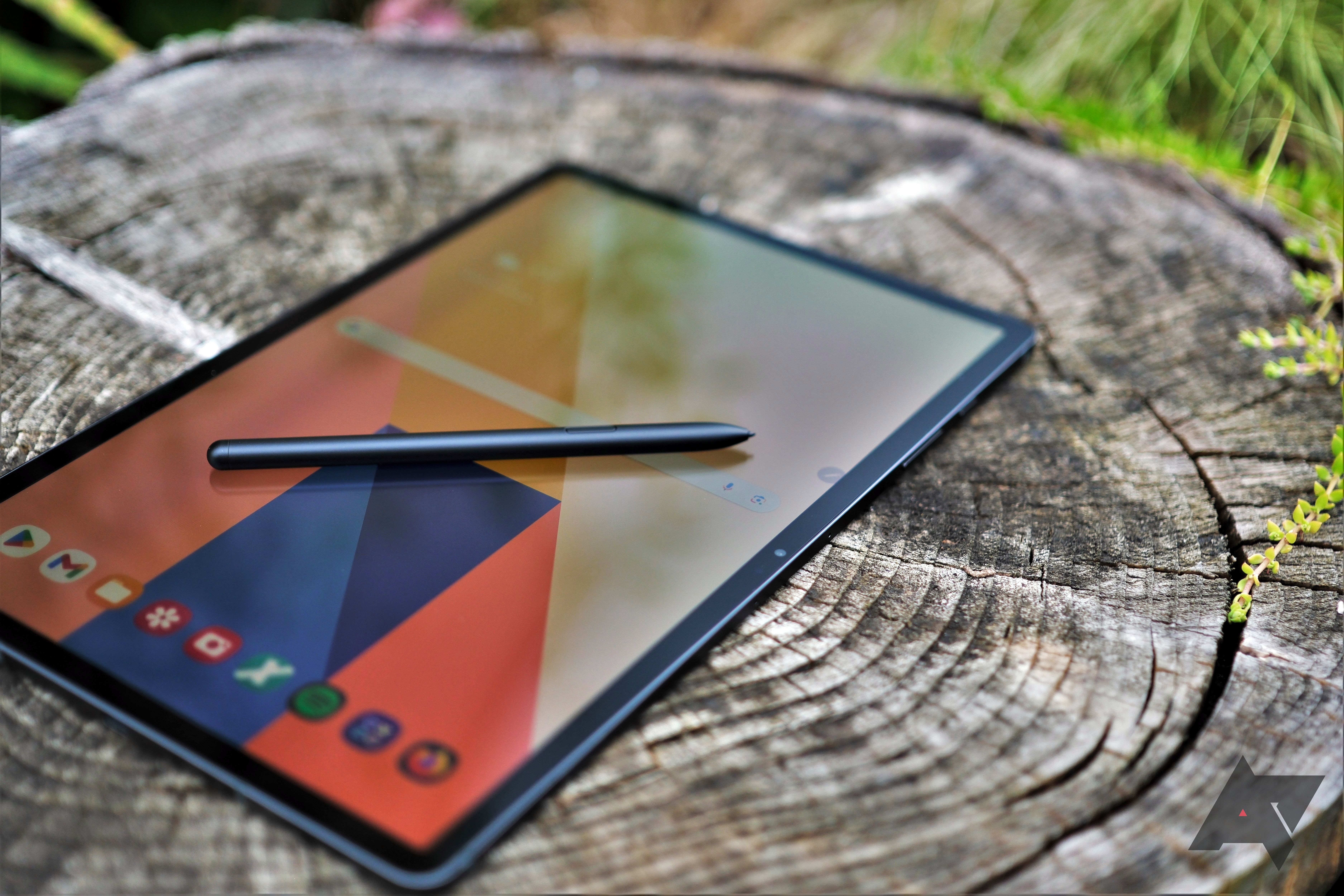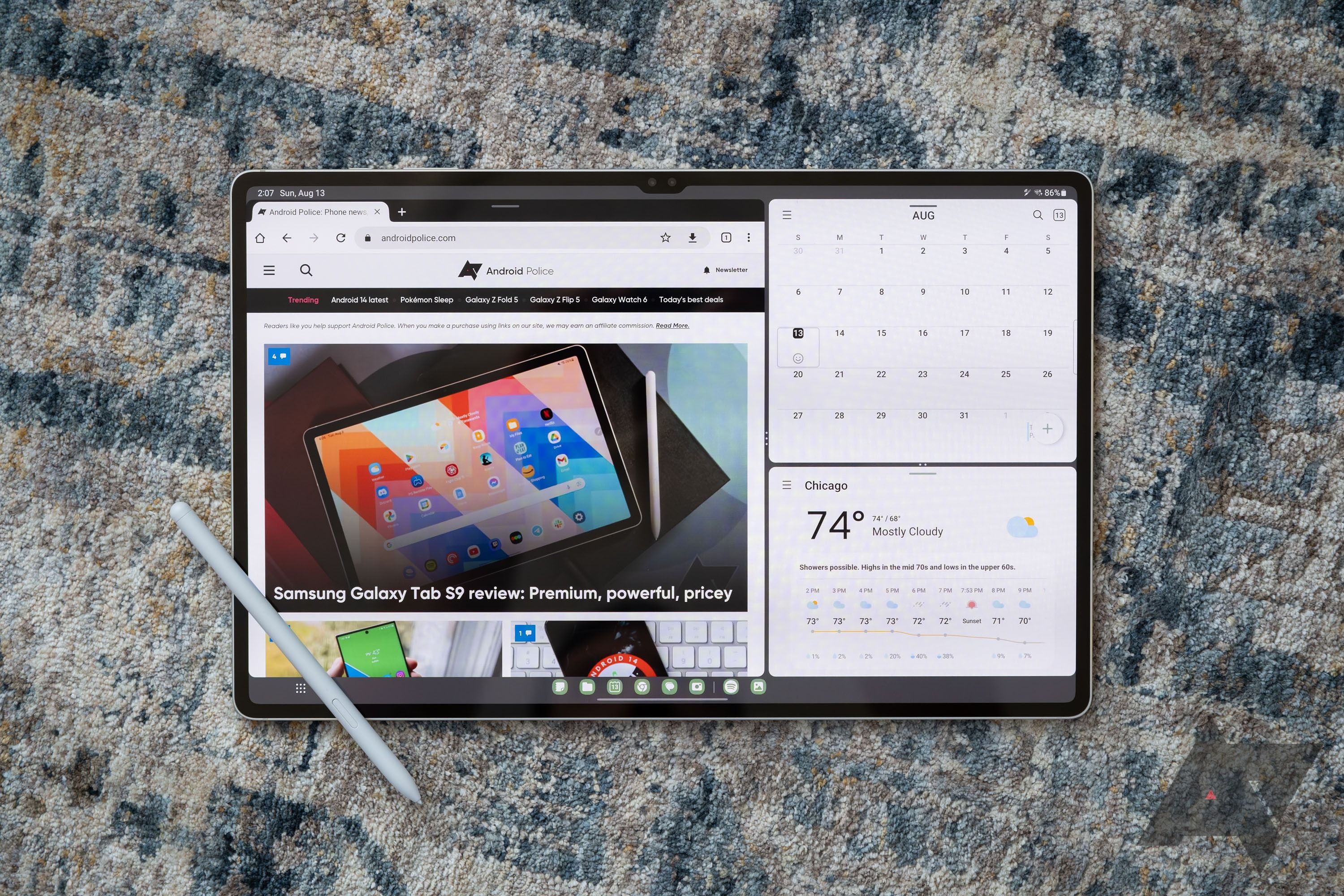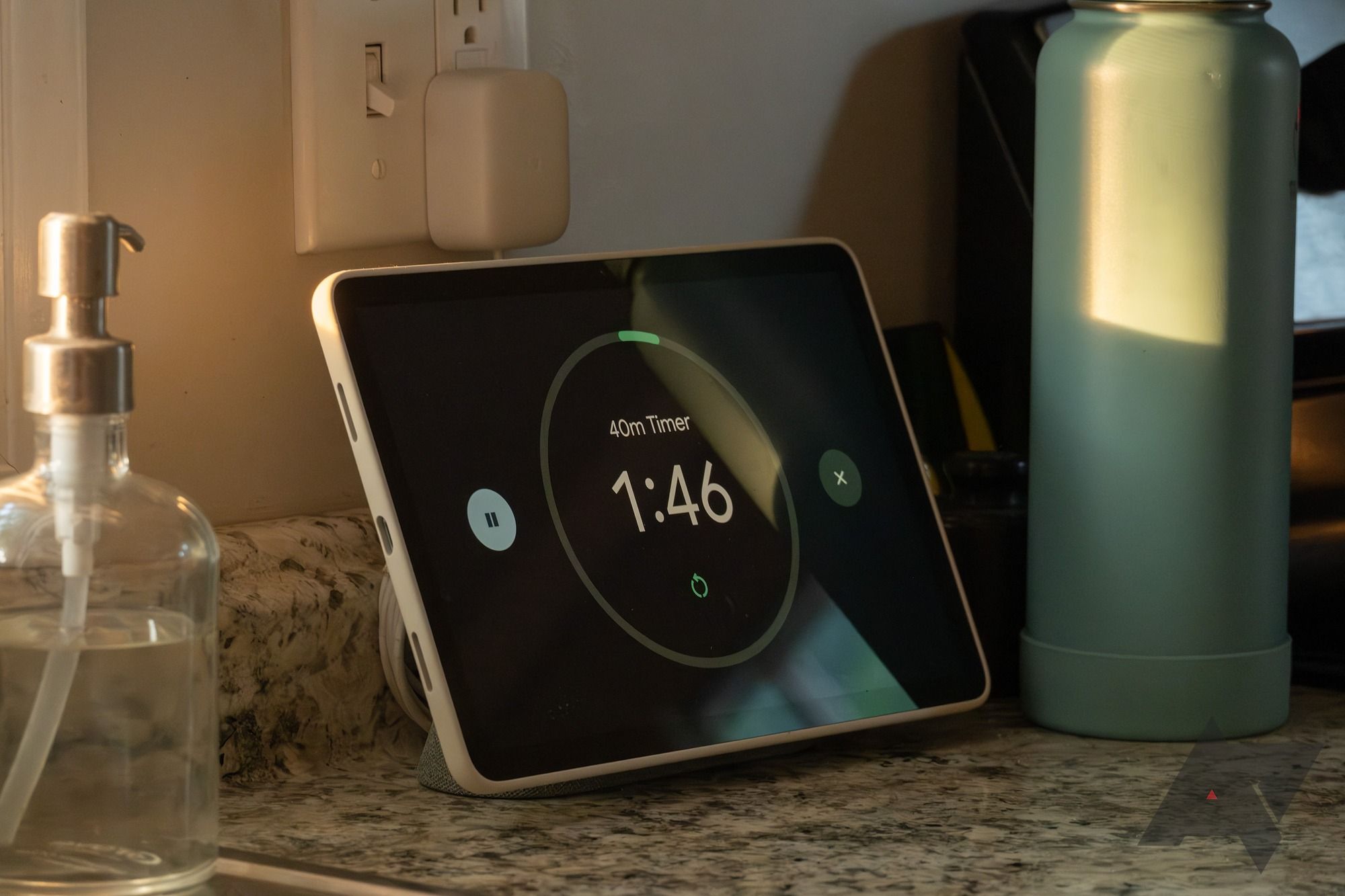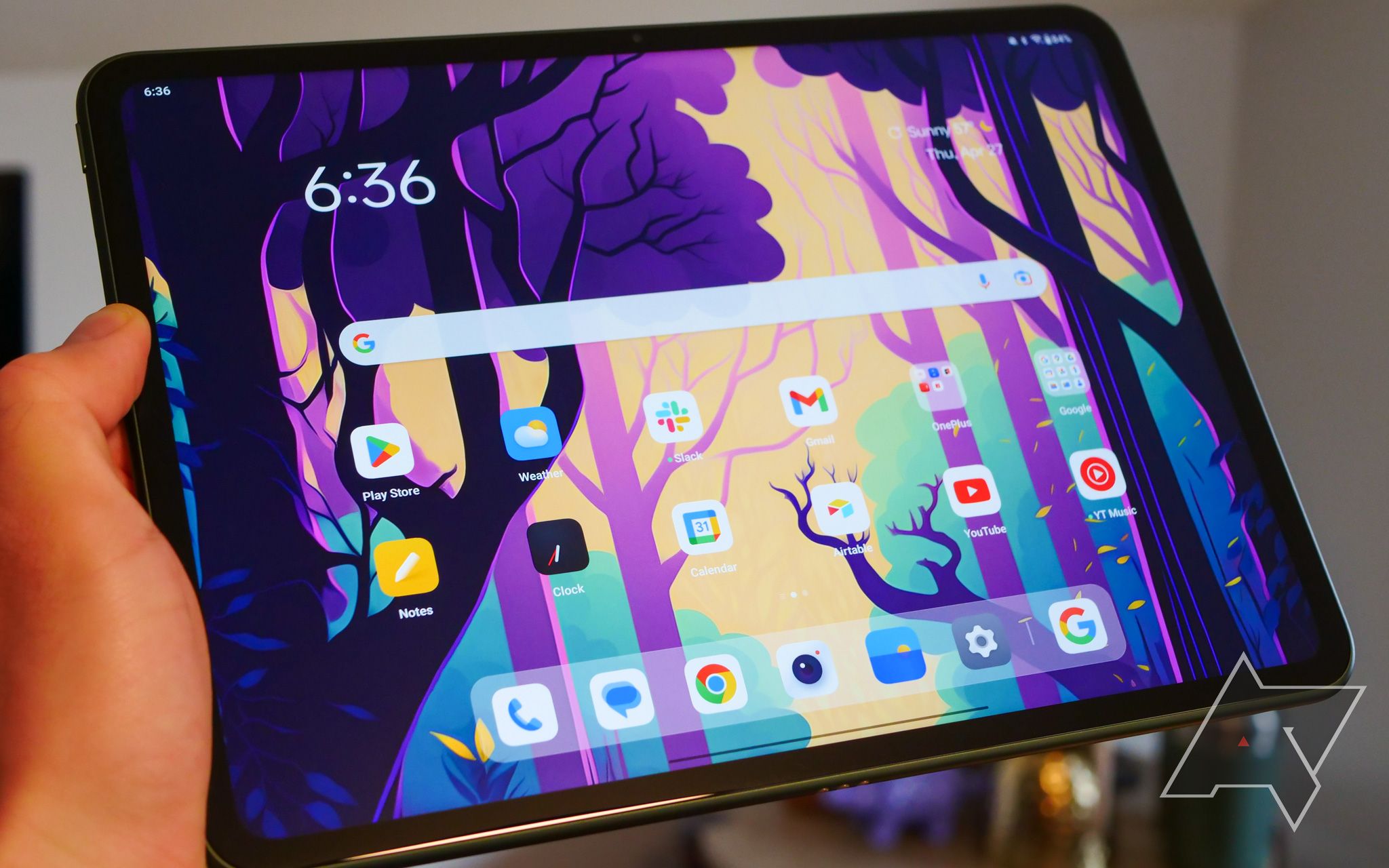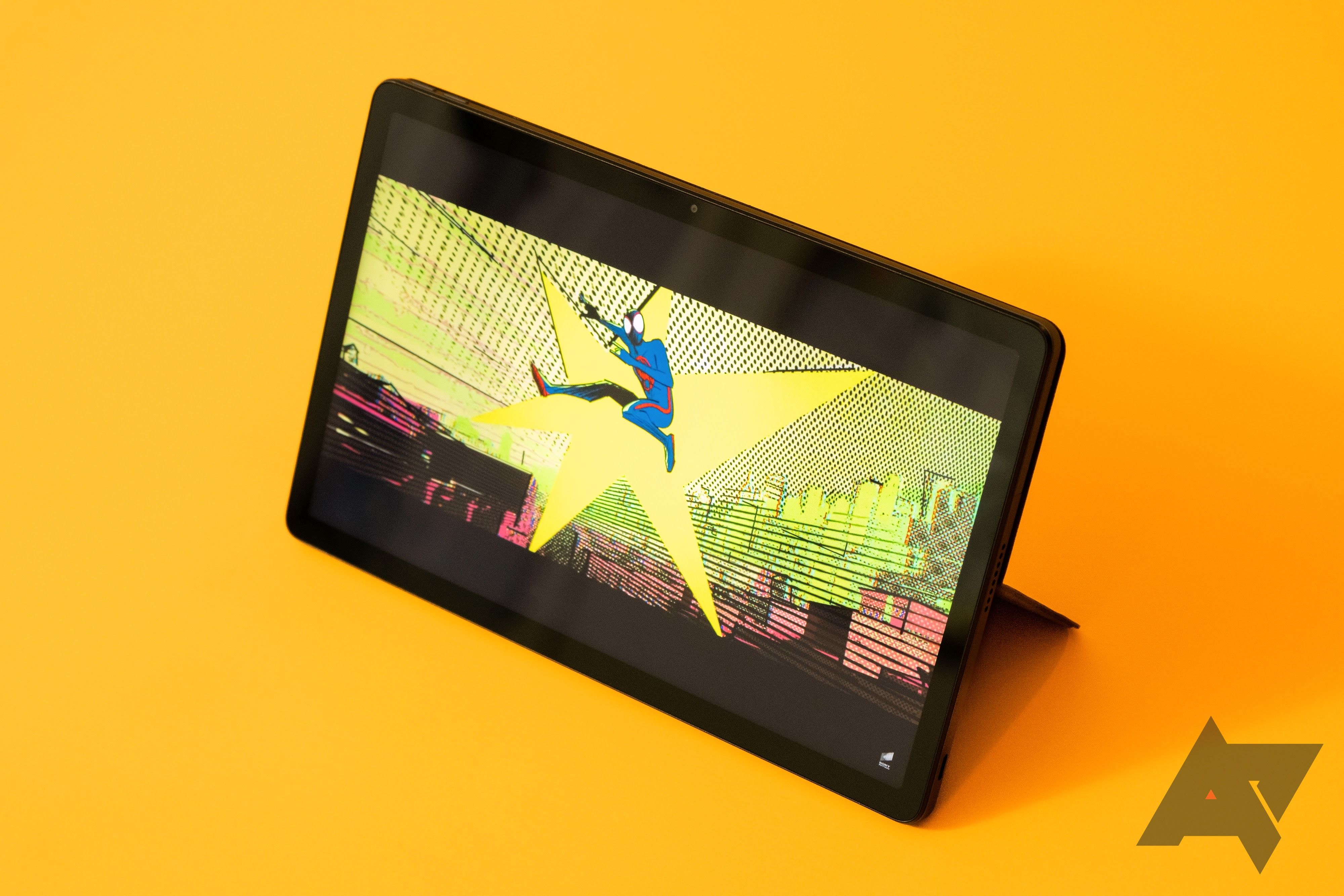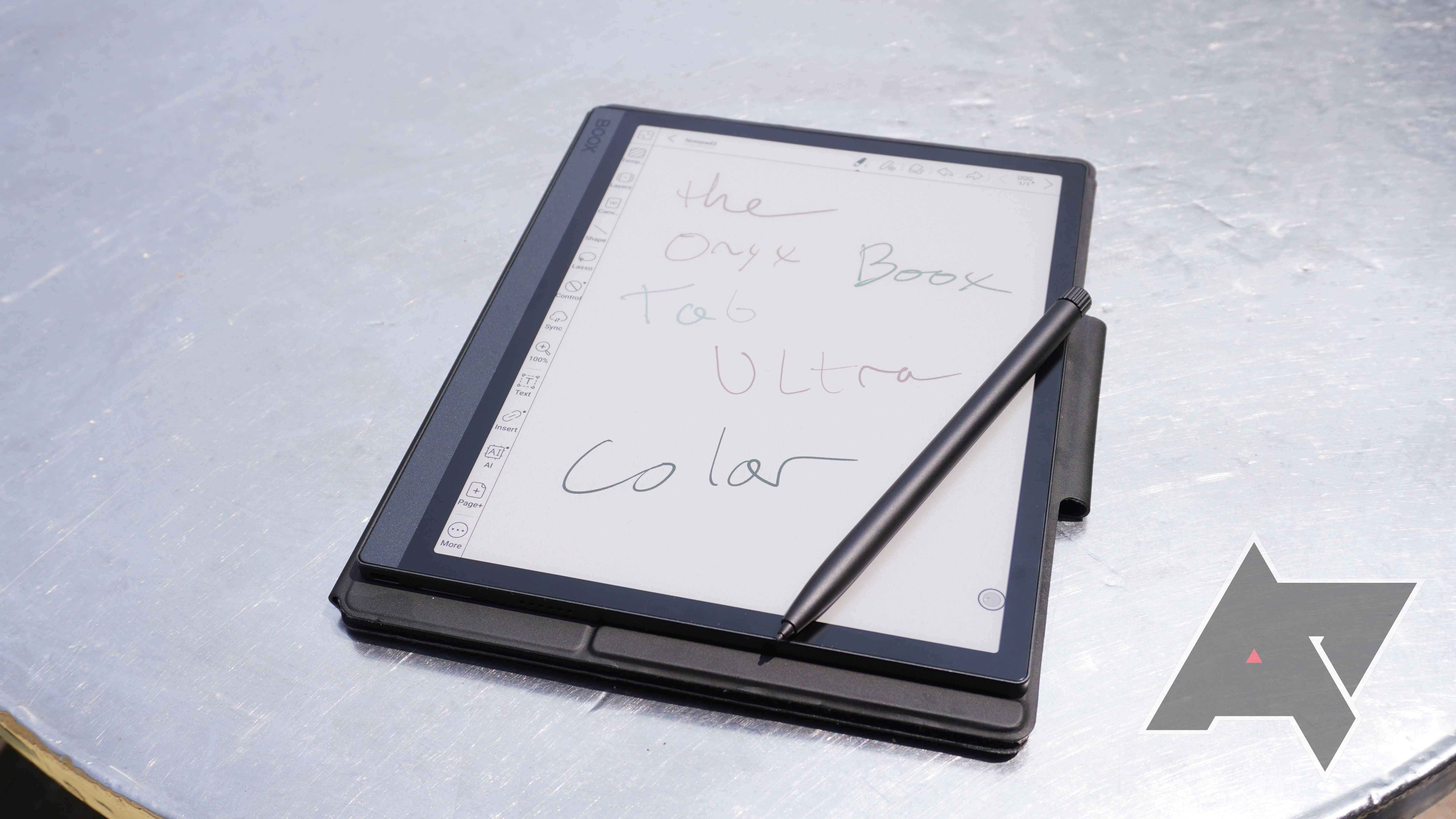While Apple may still have a firm grip on the tablet market with its iPad lineup, Android tablets are only improving and have a leg up on Apple when it comes to hardware. With super affordable options for people who need a larger screen to watch movies to massively large tablets with styluses that function as a tablet and smart display in one, there’s something for everyone in the Android market. Of course, iPadOS does have more thoughtfully designed large-screen apps than Android OS currently, but we can’t help but get excited at all the options out there. If you’re in the market for an Android tablet, you have a vast selection to choose from including options like Samsung, Google, OnePlus, Amazon, and more. Many of these tablets offer unique features that set them apart from each other — here are the best Android tablets right now.
Our favorite Android tablets
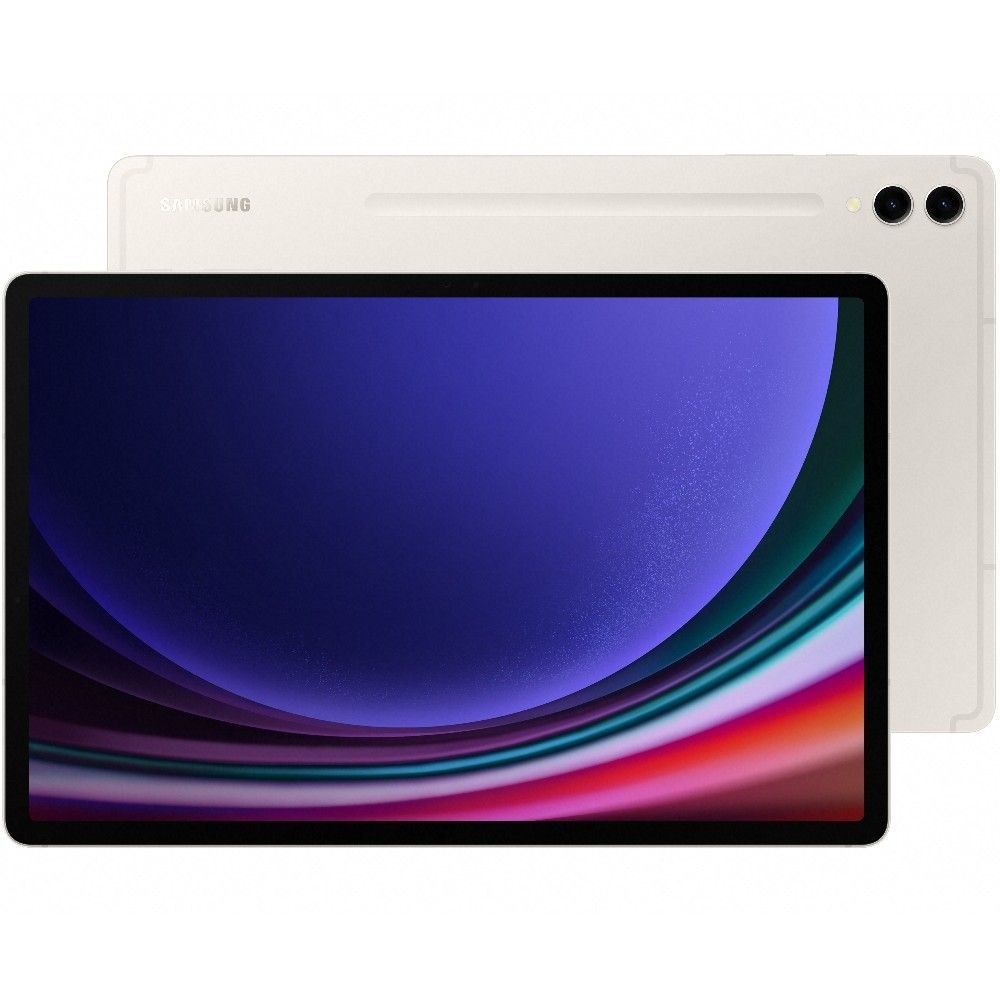
Samsung Galaxy Tab S9+
Best overall
Well-rounded and easy to love
$900 $1000 Save $100
The Galaxy Tab S9+ might not be the absolute best tablet that Samsung offers, but it is the best option for most people. It has a gorgeous 12.4-inch AMOLED display that’s easier to manage than the Tab S9 Ultra, and it’s powered by the same Snapdragon 8 Gen 2 chipset.
- Beautiful 12.4-inch AMOLED display
- Sleek design
- S Pen comes bundled with the tablet
- Strong Snapdragon 8 Gen 2 performance
- Premium pricing
- Wide aspect ratio might not be for everyone
- Expensive first-party accessories
The Samsung Galaxy Tab S9+ bumped its Tab S8+ predecessor out of the way to become our favorite Android tablet. It might be about $200 more than the standard Tab S9, but the extra money lands you a larger 12.4-inch AMOLED display, an extra rear-facing camera, a larger battery, and optional 5G connectivity.
The design of the tablet really hasn’t changed for this generation, and you’re still getting a sleek look with a wide aspect ratio and a slot on the back to magnetically attach the included S Pen.
The 12.4-inch AMOLED display with 120Hz refresh rate is absolutely stunning. It might be a bit wide for some people, but it’s ideal for sitting back and watching TV and movies. The back of the tablet is home to 13MP and 8MP cameras, while the front has a 12MP selfie camera. If you’d like to remain connected everywhere you go, optional 5G LTE connectivity is available for a $150 premium. This is the only S9 tablet with the option; you otherwise get Wi-Fi 6E and Bluetooth 5.3 connectivity.
The Tab S9+ has the same Qualcomm Snapdragon 8 Gen 2 chipset as its other S9 siblings, meaning you won’t miss out on any CPU performance by not opting for the Ultra model. It comes with 12GB of RAM, up to 512GB of storage (which can be expanded with a microSD card), and runs on a 10,090mAh battery. Android 13 and Samsung’s One UI 5.1 come preinstalled, and you get software and security updates for years to come.
Bear in mind that Samsung launched its affordable(ish) range of Galaxy Tab S9 FE tablets recently — slightly stripped-back versions of both the Tab S9 and Tab S9+, with prices starting at $450. We’re still in the process of putting these new FE versions through their paces, so we can’t pass full judgment yet, but the Tab S9 FE or Tab S9 FE+ may be a good option if you want a premium-feeling tablet for a little less.

Samsung Galaxy Tab S9 Ultra
Premium pick
For those who want the most of everything
The Tab S9 Ultra is Samsung’s largest tablet, available with the most RAM and storage as well as an extra 12MP selfie camera on the front. It’s very expensive, but it’s the right choice for those who want no compromises.
- Glorious (and enormous) 14.6-inch AMOLED display
- Strong Snapdragon 8 Gen 2 performance
- S Pen comes bundled with the tablet
- Two front-facing cameras
- Expensive even for base models
- Might be too large for those on the go
The Galaxy Tab S9 Ultra takes everything good about Samsung tablets and pushes it to a point that some might consider excessive. But if you can stomach the steep price, you’ll have in your hands a tablet with a brilliant 14.5-inch AMOLED screen at a 1,848 x 2,960 resolution and 120Hz refresh rate.
Bezels remain thin around all sides, though there is a small notch at the top (in landscape mode, thank goodness) to house the tablet’s two 12MP front-facing cameras. It’s an ideal device for watching movies and TV, plus the larger screen makes it easier to multitask.
Like its smaller siblings, the Tab S9 Ultra is powered by the Qualcomm Snapdragon 8 Gen 2 chipset. It’s configurable with either 12 or 16GB of RAM, as well as up to 1TB of storage space (expandable with a microSD card), and it has an 11,200mAh battery — the largest of the S9 lineup — to keep up with the over-sized display.
The biggest drawback to the Tab S9 Ultra (aside from its size, meaning it can be a little unwieldy) is the price. Base models with 12GB of RAM and 256GB of storage start at $1,200, with prices climbing all the way to $1,620 for 16GB of RAM and 1TB of storage before you add on the extra cost of a case or keyboard. That’s more than a lot of great laptops cost, especially if you’re shopping for a Chromebook. Still, it’s the right choice if you want to get the absolute most out of your Android tablet.
Be sure to check out our picks for the best Galaxy Tab S9 Ultra accessories to help you hit the ground running.
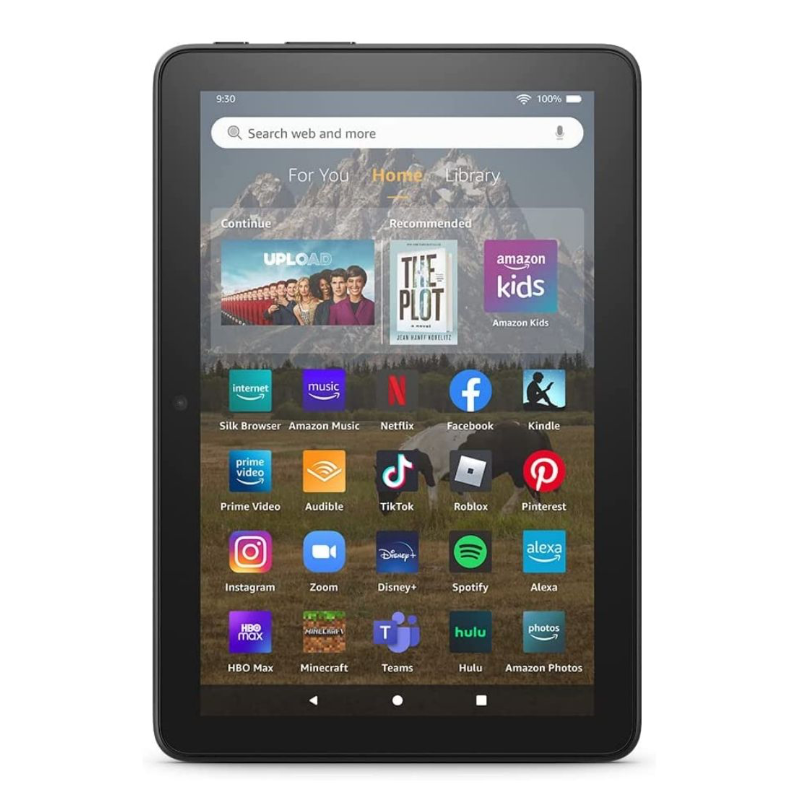
Amazon Fire HD 8 (2022)
Best value
A bargain at $100
$60 $100 Save $40
It’s not quite as affordable as the Fire 7, but Amazon’s 2022 Fire HD 8 tablet is still eminently reasonable at $100 and offers a larger, higher resolution display and moderately better performance.
- Long battery life for traveling
- Great integration with Amazon’s services
- Perfect for kids
- Fire OS limits apps
- Poor performance for gaming
- Low-quality cameras
Amazon’s latest Fire HD 8 tablet is a great option if you’re looking for something affordable but still want something a little nicer than the company’s rock-bottom-priced Fire 7. It’s got an 8-inch display that’s higher-res than the one on the Fire 7, though it’s really only “HD” in the technical sense at a resolution of 1,280 x 800. Still, it’s plenty good enough for reading, browsing social media, and some light gaming.
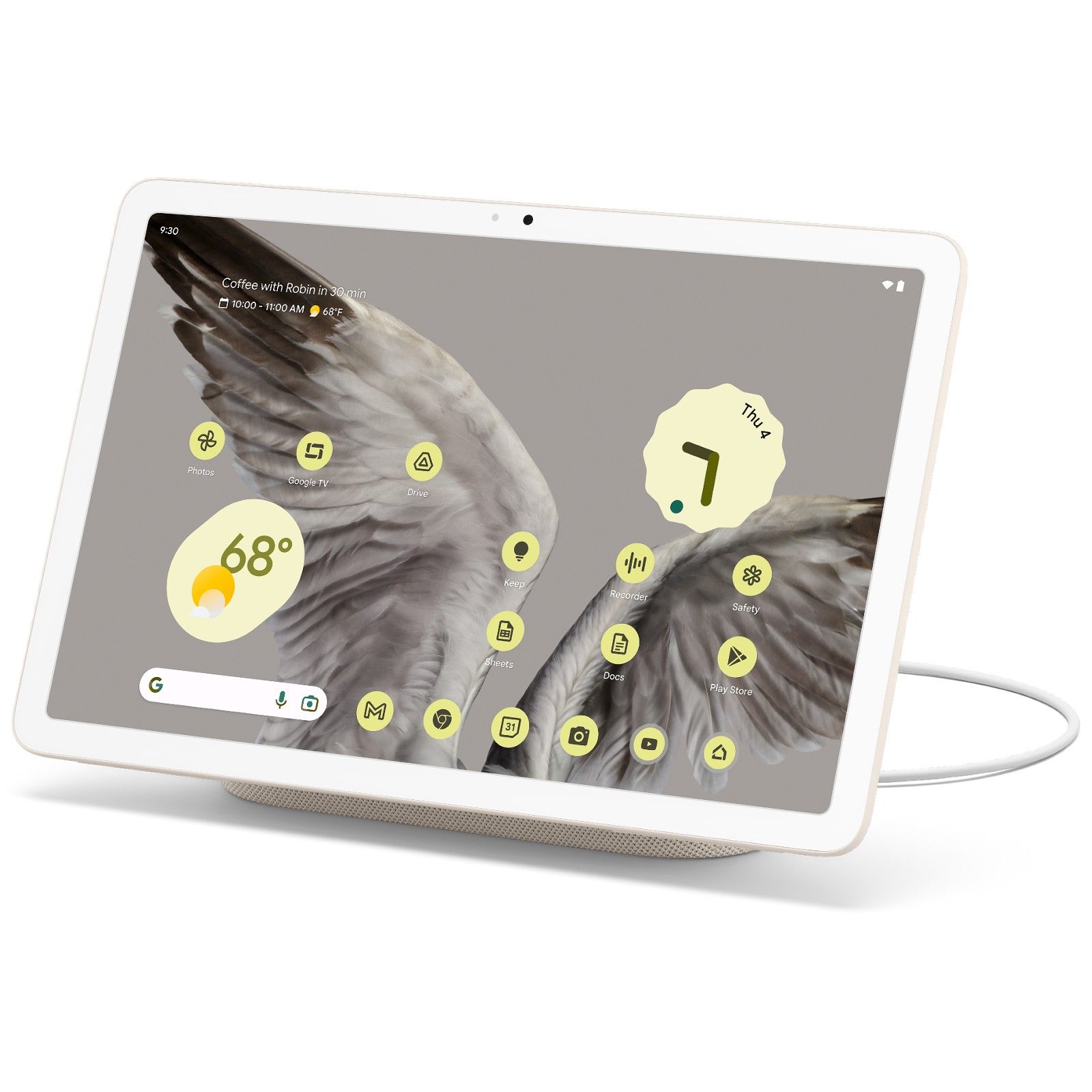
Google Pixel Tablet
Multifunctional
A tablet and a sort-of smart display in one
$399 $499 Save $100
Looking for a smart home hub that can double as a gaming tablet? Google’s Pixel Tablet fits the bill. It flaunts a 10.9-inch IPS LCD screen, backed by the power of the Google Tensor G2 chipset and 8GB RAM for a snappy experience. Its camera setup includes an 8 MP rear and front camera, perfect for capturing those spontaneous moments or crystal-clear video calls.
The Google Pixel Tablet is the company’s long-overdue return to the tablet form factor. The tablet is a good midranger, with a perfectly decent 60Hz LCD screen, stereo speakers, and solid performance thanks to its Tensor G2 chipset and eight gigs of RAM — the same setup that drives the Pixel 7 series.
We’re hopeful that Google will address some of the drawbacks of the Pixel Tablet in 2024 the second version of the Android slate. It would be something special to see Google actually rival what Samsung offers in the Android market.
Possibly more interesting than the tablet itself is the Charging Speaker Dock it comes bundled with. When placed on its dock, the Pixel Tablet becomes a quasi-smart display: in Hub Mode, the tablet can accept Hey Google commands and functions as a Chromecast target for both audio and video. Sound is routed through the dock’s speaker, giving the tablet’s very average built-in speakers a boost.
The Pixel Tablet is sold bundled with its dock for $500 — a decent deal on a double-duty device. The speaker dock’s audio is okay at best, and Hub Mode lacks some features you’ll find on Google’s Nest speakers and smart displays, but if those limitations won’t bother you, the Pixel Tablet may be an interesting option.
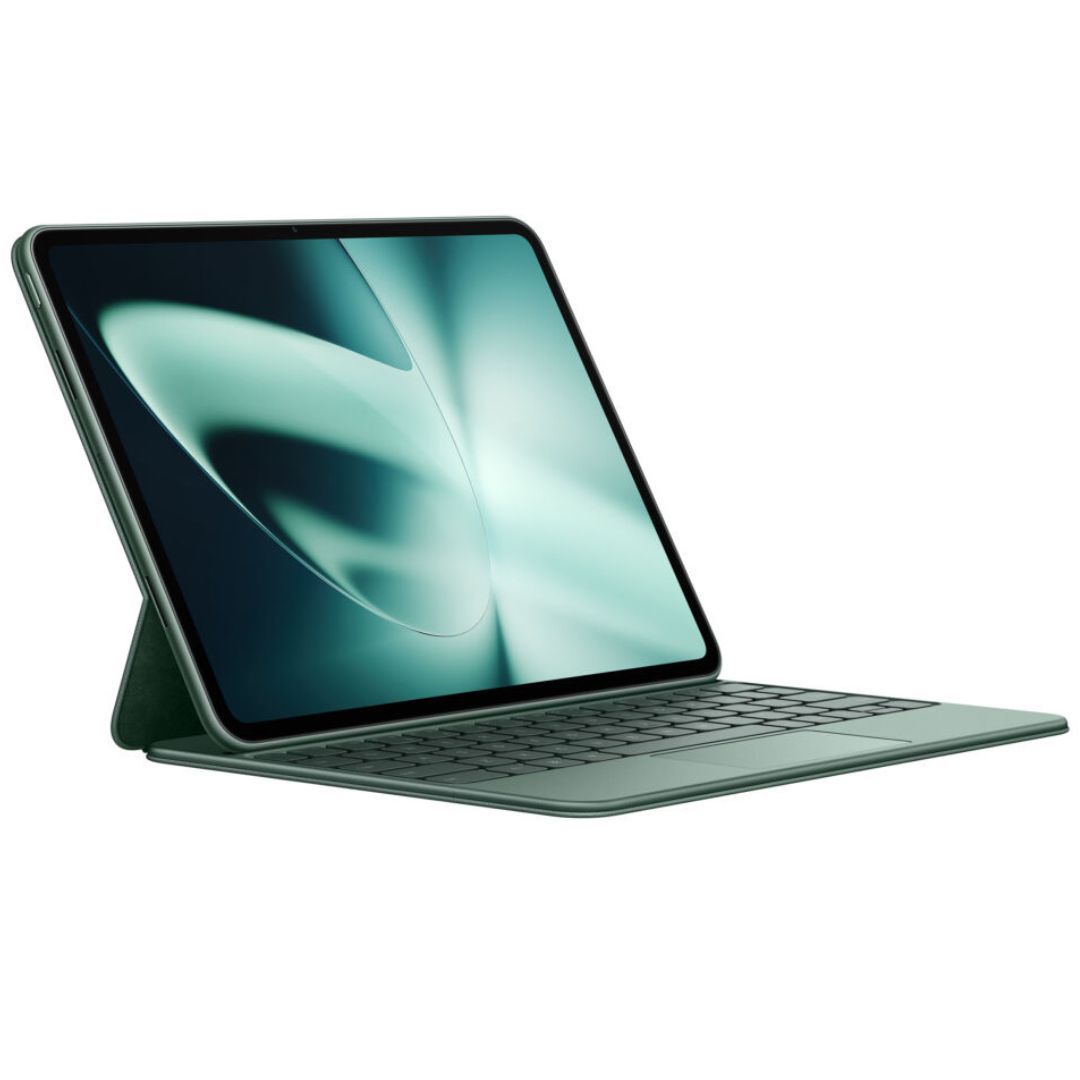
OnePlus Pad
Up-and-comer
OnePlus’s first tablet is pretty good
OnePlus’s first tablet, the OnePlus Pad, is an admirable first try, with strong performance, long battery life, and Android 13 out of the box. OnePlus also has some neat optional accessories to go along with it.
- Crisp 7:5 display
- Long battery life and superfast 67W charging
- Strong performance
- No fingerprint sensor
- Centered camera bump is weird
- Some OxygenOS bugs
As OnePlus’s inaugural tablet, the OnePlus Pad gets quite a bit right. Performance is solid, battery life is very good, and the screen has an aspect ratio of 7:5, which makes it comfortable for many tablet tasks, like reading and browsing the internet — though it’s not ideal for standard 16:9 video.
The OnePlus Pad has OnePlus’s characteristically quick charging, too, at up to 67W. OxygenOS is occasionally annoying and the tablet doesn’t have a fingerprint sensor, but if those don’t sound like major drawbacks to you, it’s a great pick.
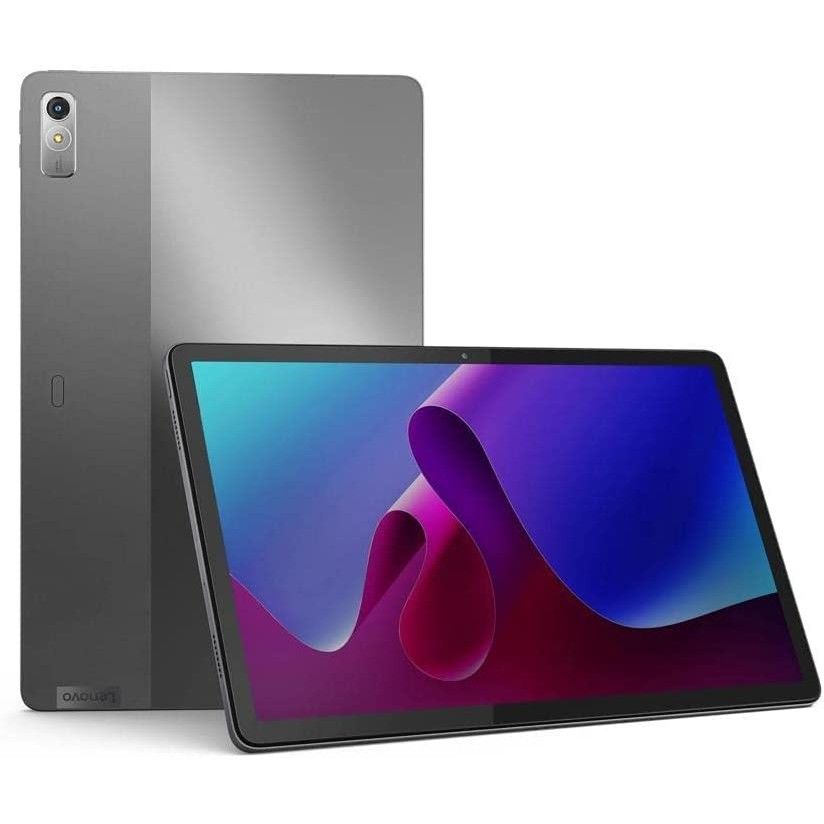
Lenovo Tab P11 Pro Gen 2
Splendid screen
Great for movies
The Lenovo Tab P11 Pro Gen 2 may not have the most impressive internals, but it’s got a high-res 120Hz OLED display that’s excellent for watching videos.
- 120Hz OLED display
- Strong battery life
- Thin and light
- Performance could be better
If you’re in the market for a midrange media tablet, consider the Lenovo Tab P11 Pro Gen 2. With a middling MediaTek chipset and four gigs of RAM, the P11 Pro isn’t a powerhouse, but it’s got a great display: an OLED panel with a resolution of 2,560 x 1,536 and a refresh rate of 120Hz. Comics, videos, and games look excellent on this tablet. At $400 or less, it’s a good option, unless you want to use your tablet for productivity tasks or especially demanding mobile games.
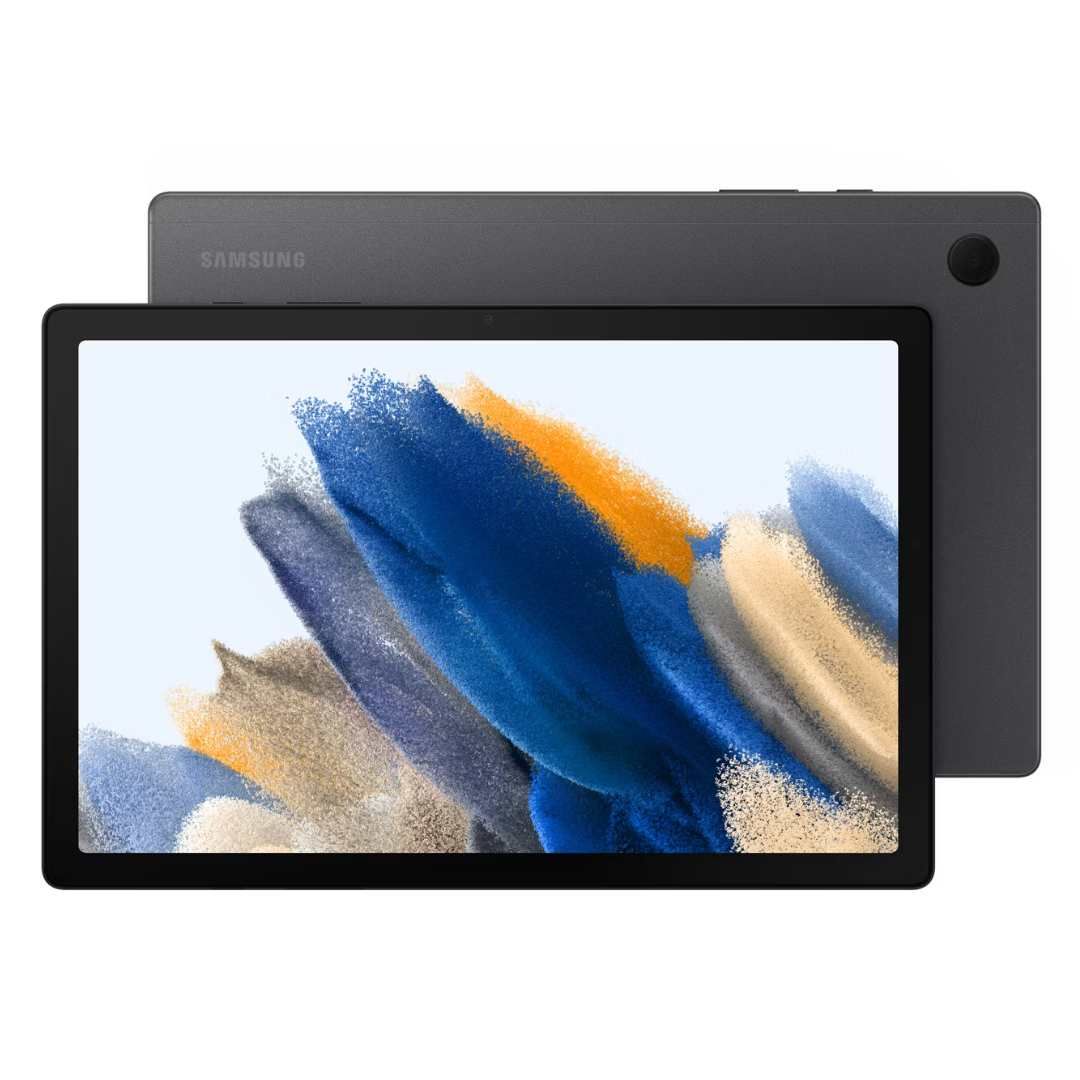
Samsung Galaxy Tab A8
All-around decent
Not bad for $200 or less
With a Unisoc CPU and three gigs of RAM, the Samsung Galaxy Tab A8 isn’t the most powerful tablet in the world. But it can often be found for less than $200, and unlike Amazon’s tablets, has the Play Store pre-installed.
- 1200p display
- Updated design over the Tab A7
- Optional upgrades to more RAM and storage
- No fingerprint sensor
- 32GB of storage on the base model is limiting
The Samsung Galaxy Tab A8 is a refreshed version of the Samsung Galaxy Tab A7 that we liked quite a bit in late 2020. For the same $230 MSRP, you’re getting an updated design and a Unisoc processor that’s a bit faster than the low-end Snapdragon found in the previous generation. Equally interesting, though, is that you can get upgraded versions that have four gigs of RAM and up to 128 gigs of storage.
We’re still waiting on the U.S. release of the Galaxy Tab A9; it’s about time the A-Series of Samsung’s tablet was upgraded. You can get the Galaxy Tab A9+ right now if you want a bit of a bigger option, but for a lot of people, the replacement of the standard A8 tablet is what they are looking for!
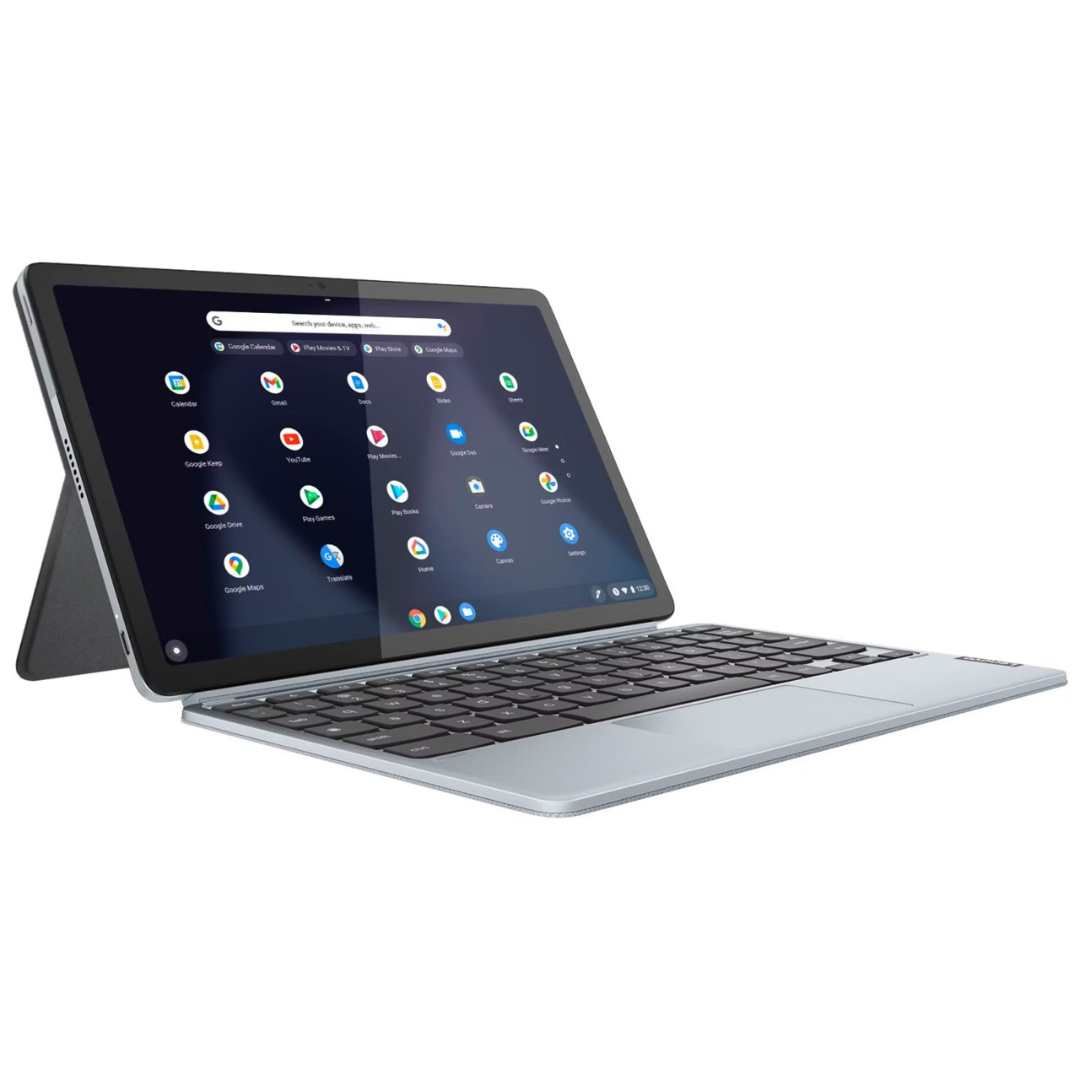
Lenovo Chromebook Duet 3
ChromeOS contender
Portable and versatile
$322 $419 Save $97
The Lenovo Chromebook Duet 3 isn’t an Android tablet, but it runs ChromeOS, so it has access to Android apps. The tablet has a nice screen and comes with a decent detachable keyboard case.
- Sharp, 2K display
- Very portable
- Long battery life
- Hard to use on your lap
- Crummy trackpad
- Not very powerful
Technically, the Lenovo Chromebook Duet 3 doesn’t run Android, but being a ChromeOS device, it can run Android apps. The tablet’s 11-inch, 2K display is sharp and just the right size for casual tablet use. The Duet 3 also comes with a detachable keyboard cover for doing more laptop-like tasks, which is something ChromeOS excels at. Its Snapdragon chipset provides ample horsepower for light-duty work, too.
However, the detachable keyboard design makes using the Duet 3 in your lap a hassle, and its touchpad has too much drag to use comfortably for long periods. But if that all sounds good to you, the Duet 3 is a fine tablet for running Android apps.
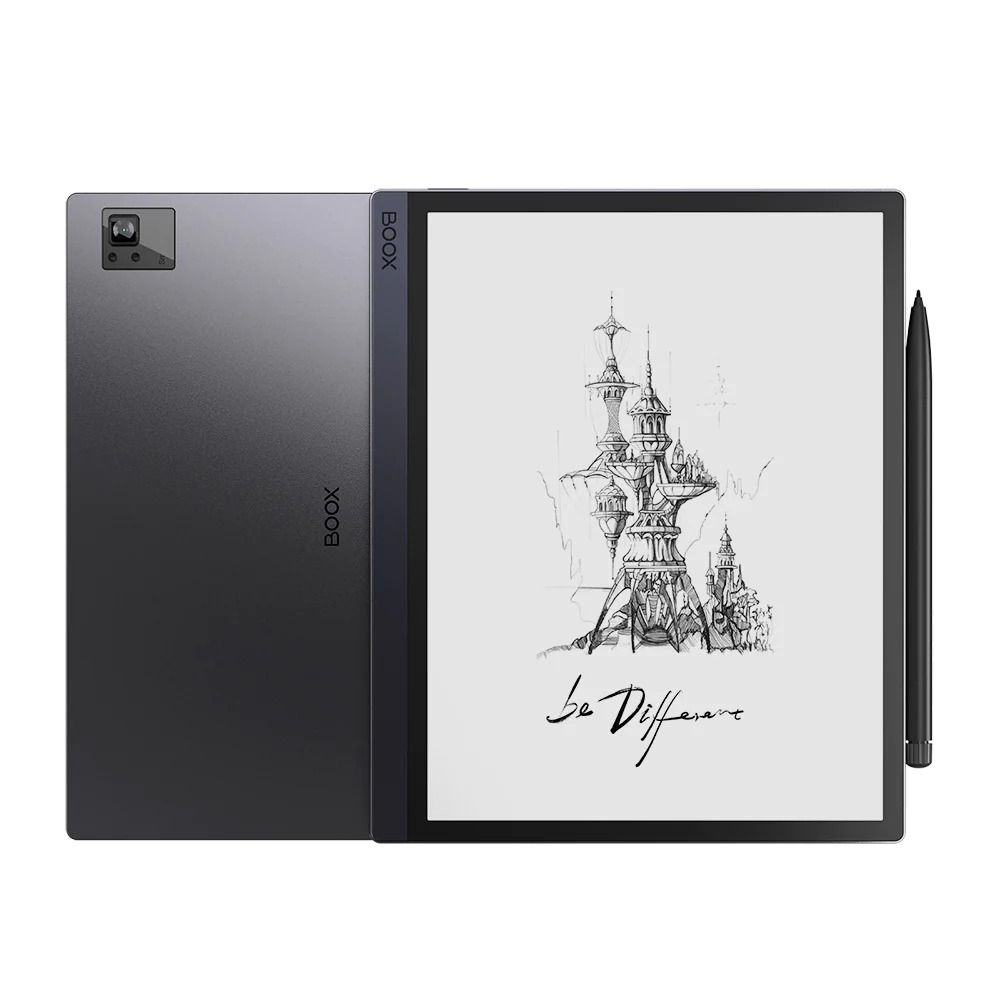
Onyx Boox Tab Ultra
E Ink excellence
Not for everyone, but great for some
The Boox Tab Ultra attempts to be as close to a tablet in use as possible, and it leans more toward productivity than content consumption. It is powered by Android 11 and offers a highly visible display that is ideal for reading in all lighting conditions. The bundled stylus is also accurate for sketching and taking notes, and the keyboard case keeps the device out of harm’s way. It’s ideal if you’re in the market for a capable e-reader that can also play media and browse the web.
- E Ink display is fantastic for reading
- Strong battery life
- Keyboard and stylus support
- Pricey
- Heavier than many similar options
- Android on E Ink isn’t a perfect experience
The Onyx Boox Tab Ultra is an Android tablet with a 10.3-inch E Ink display, making it a fantastic option for reading but a non-starter for many normal tablet use cases like watching videos or playing games. However, it’s bundled with a stylus and may be a good option for note-takers. You can also grab an optional keyboard case for an additional $109. Unlike some of Onyx’s Boox tablets, the Tab Ultra has access to the Play Store, where you can download e-reader apps like Kindle and Kobo.
At a starting price of $600, the Tab Ultra is decidedly not for everyone. Performance out of the tablet’s Snapdragon 662 chipset and four gigs of RAM is solid but not spectacular, and the tablet’s E Ink display can make it feel even slower. But if your tablet use primarily comes down to reading and writing with a side of audio streaming, and you want a big, high-res screen to do it all on, this could be an appealing pick.
The best Android tablet for you
Samsung’s predominance in this list is because it really does make the best Android tablets. The Galaxy Tab S9+ is an excellent place to start your search for your next Android slate. It’s well-built, has a speedy Snapdragon 8 Gen 2 chipset, has a great display, and is set to receive Android updates into 2027 (plus security updates for a year longer). You shouldn’t have any trouble making the Tab S9+ last whether you’re working, gaming, or binge-watching Netflix.
The OnePlus Pad and the Google Pixel Tablet are interesting mid-range options for different reasons. OnePlus’s tablet features a high refresh rate display and super-fast charging, while Google’s comes bundled with a Charging Speaker Dock (there’s no way to purchase the tablet separately) that lets it function like a smart display while it’s charging.
If you’re after something less pricey, Amazon’s Fire HD 8 will be worth a look. It’s not nearly as premium or powerful as our top picks from Samsung, but it starts at a much more palatable $100. Just don’t expect it to handle heavy-duty tasks, it’s a budget option through and through. The Fire line is more about consumption than productivity, but the warranties are good, and the devices are great for kids.

Samsung Galaxy Tab S9+
Best overall
$950 $1000 Save $50
This might not be Samsung’s best tablet, but it’s the best for most people. The screen is perfectly sized, it has the same chipset as even the S9 Ultra, and it’s also more modestly priced.
Source link

